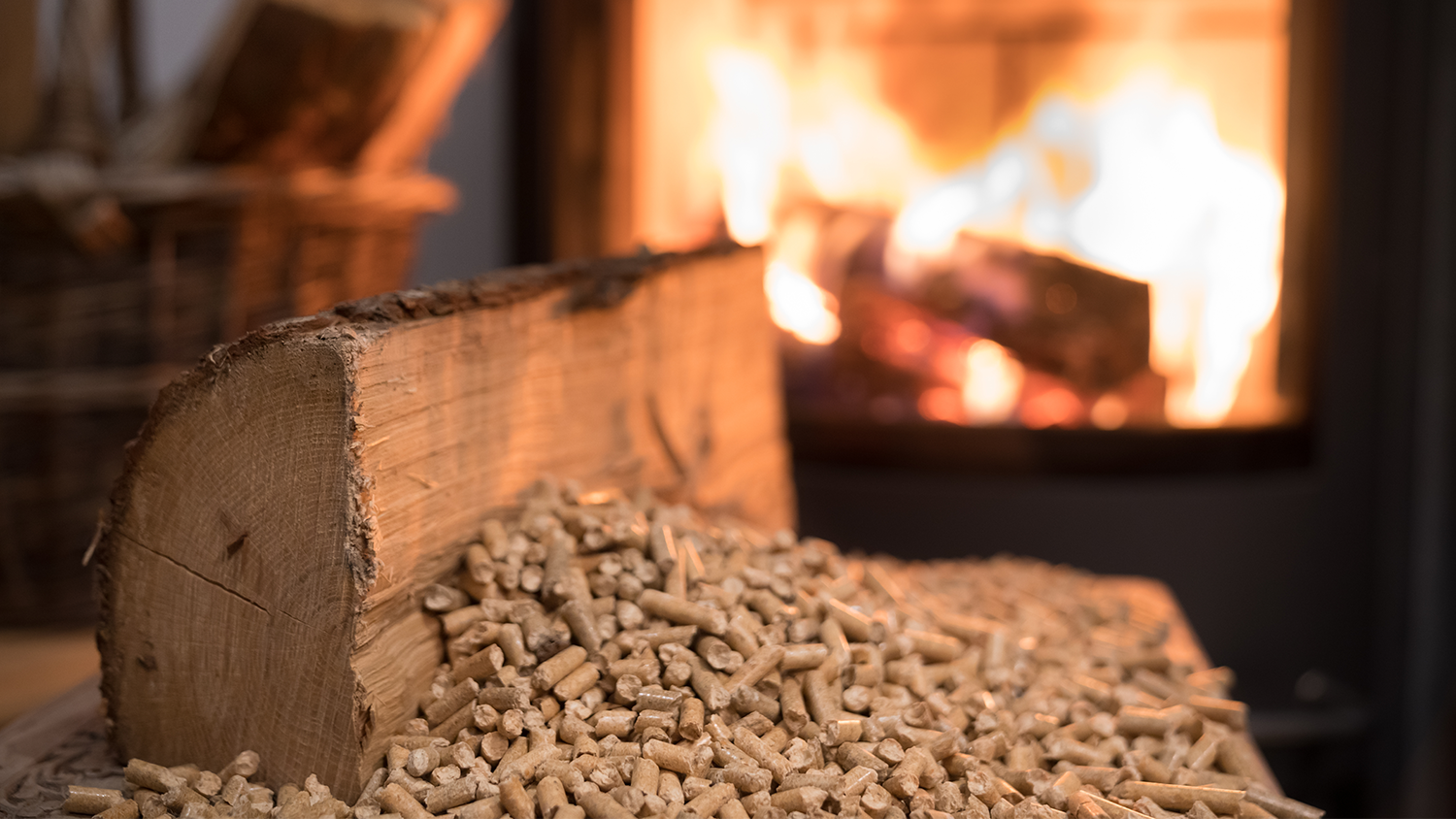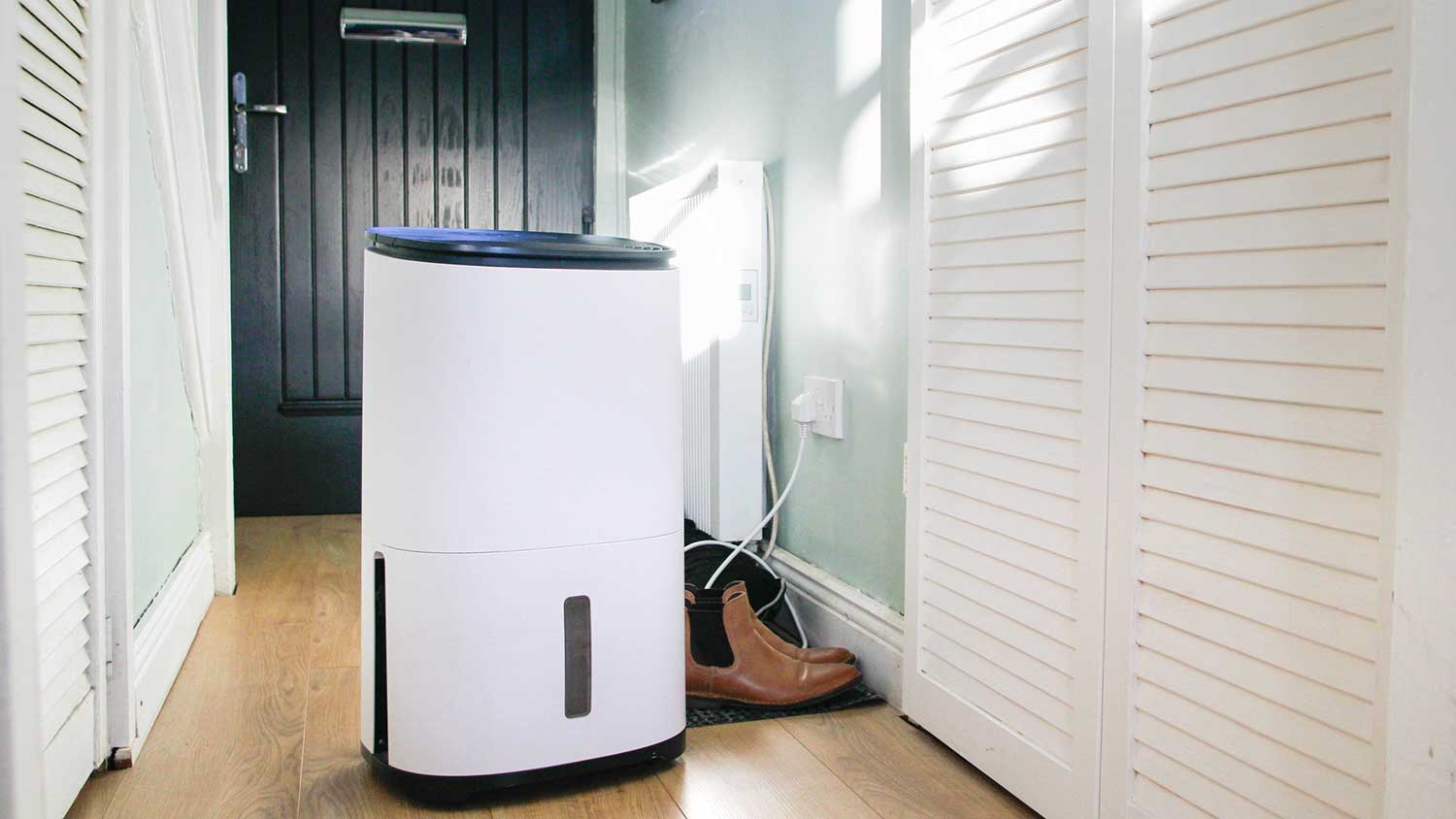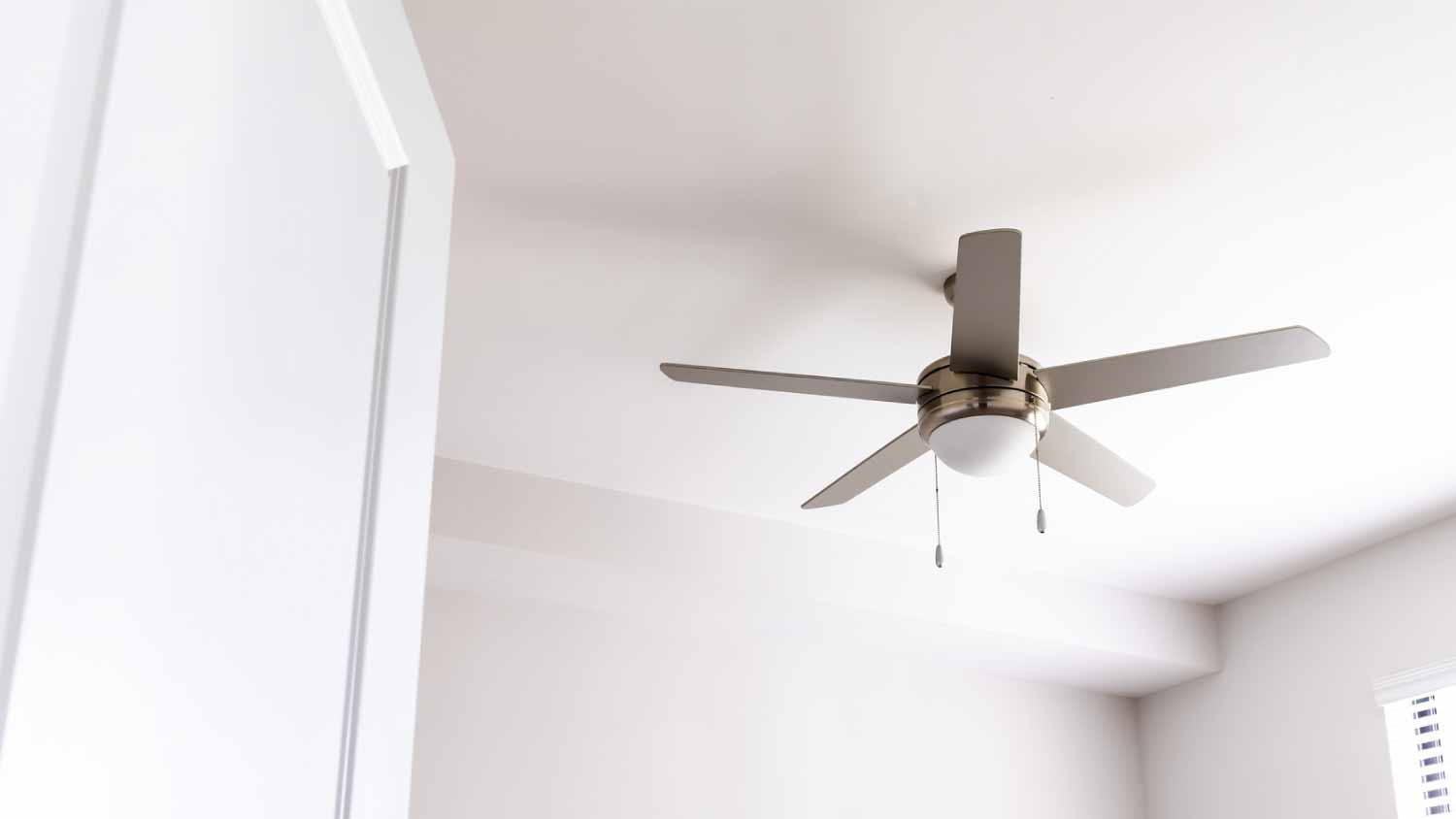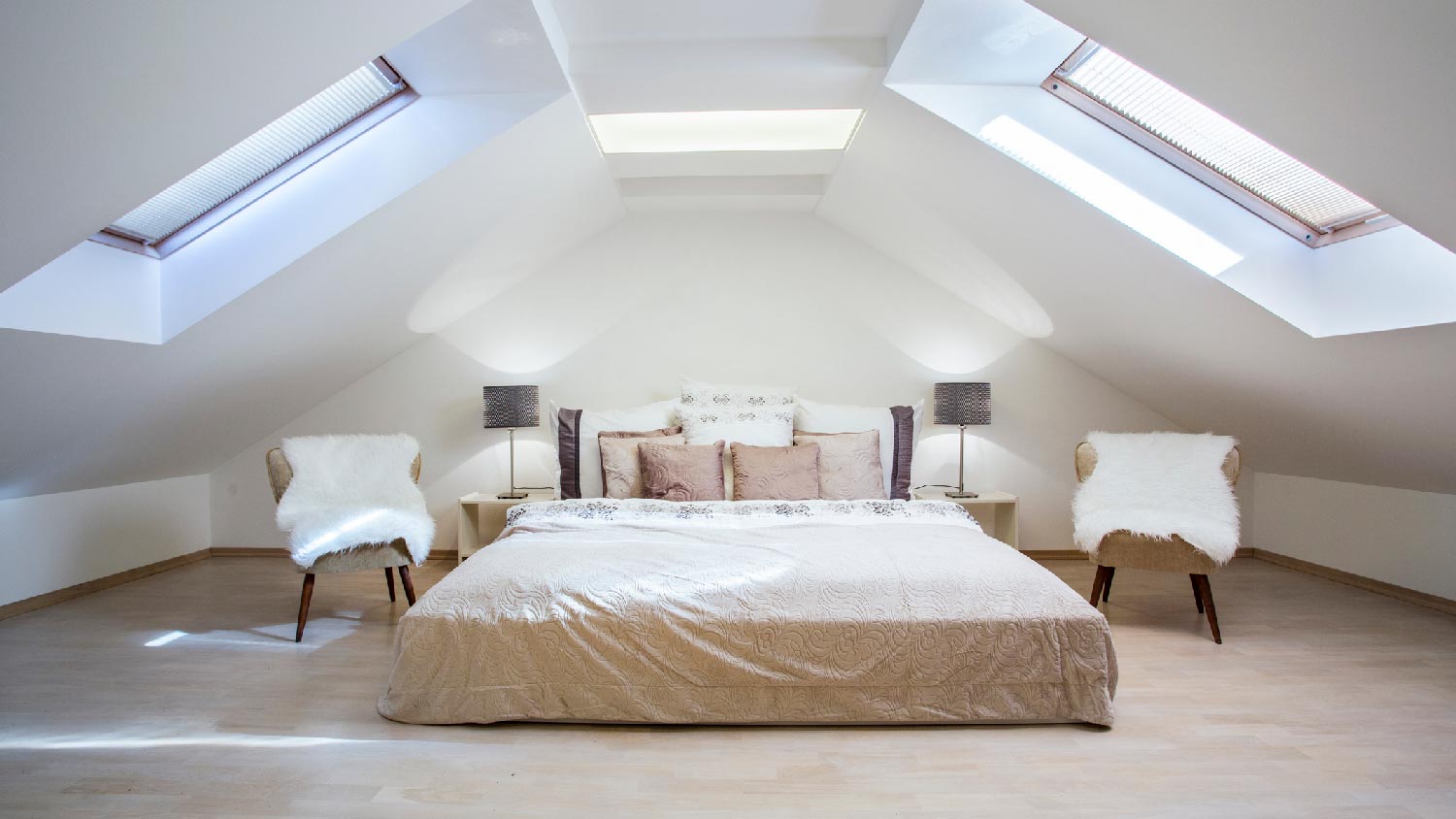5 Alternative Ways to Heat Your Home This Winter
Turn up the heat—without using gas—with these alternatives


Some alternative heating systems use electricity, while others use air, water, ground, or solar energy
Heat pumps use 50% less electricity than conventional furnaces or baseboard heaters.
Pellet stoves are cost-efficient (running between $1,700 to $3,000) and offer warmth for smaller spaces.
Keeping your home warm during the winter months can be a challenge, especially when your old heating system has seen better days or you’re hoping to ditch natural gas and fossil fuels. Fortunately, there are plenty of alternative heating systems to keep your home warm during the colder seasons. Check out these five alternatives to traditional heating systems.
| Heating System | Average Installation Cost |
|---|---|
| Heat Pump | $2,000–20,000 |
| Solar Heating | $3,500–$6,000 |
| Pellet Stoves | $2,000–$5,000 |
| Electric Hydronic Baseboard Heaters | $6,000–$8,000 |
| Hydronic Radiant Floor Heaters | $6,000–$9,000 |
1. Heat Pump Systems
Compared to traditional furnaces and baseboard heating systems, heat pumps use around 50% less electricity, according to Energy Saver. Despite their name, heat pumps work to cool and warm your home by transferring heat to and from the house.
All heat pumps work through this heat transfer process, but there are three types of heat pump systems that use different sources: air, water, and ground.
Air-Source Heat Pumps
The most popular heat pump on the market is an air-source heat pump. Air pump systems transfer heat from the air outside of your home on cold days and push it through your house to keep it warm. On hot days, air-source pumps remove hot air from the home by transferring it out of the house.
Expect to pay somewhere between $4,500 to $8,000 for an average air-source heat pump.
Water-Source Heat Pumps
A water heat pump uses a water loop system to pull heat either from the inside or your house or the outside. This effectively cools your house in the summer and warms it in the winter. Once the water loop exchanges the heat, it then transfers it to the air, releasing it into the great outdoors.
Water-source heat pumps are efficient, simple, and affordable, costing approximately $2,000 to $4,500 on average.
Geothermal Heat Pumps
Ground-source heat pumps, also known as geothermal heat pumps, evenly distribute heat throughout your home. These systems are between 30% to 60% more energy-efficient than standard heating systems. Ground-source systems use pipes that are built into the ground to pull heat from the earth to warm your home and pull heat out of your home when it’s hot inside.
Geothermal heat costs more on the front end, falling between $6,000 to $20,000 on average, but geothermal heating and cooling systems benefit you by cutting costs on utility bills.
Also, homeowners who install Energy Star-certified geothermal heat pumps may be eligible for tax credits.
2. Solar Heating System
Already have a solar panel or roofing system? Simply add a solar-powered heating system to your home for another excellent alternative to traditional gas heat. And if you don’t have a solar system just yet, consider finding a professional solar installer in your area. Solar heaters work by absorbing the rays of the sun through panels.
Gaining in popularity, the total cost and installation rates for solar-powered systems are going down, with a typical solar heater system costing between $3,500 to $6,000 or an average of $4,750. Some of these costs can be offset, however, as solar systems may be eligible for federal tax credits.
There are two types of solar heating systems that you can choose between: solar air heating systems or solar water heating systems.
Solar Air Heating System
A solar air heater works by heating the air in your home with solar energy. The heater uses a solar collector to pull and heat cold air before pushing it through the air ducts.
Solar Water Heating System
Solar water heaters work by collecting solar radiation and using a liquid-based collector system to heat the fluids until hot. Then, this system evenly spreads the warmth throughout your home using either a radiant floor system, a hot-water baseboard system, or a central forced-air heating system. The average cost to install a solar water heater is around $4,000, but with long term energy savings between 50% to 80% each month it’s worth the initial price tag.
3. Pellet Stoves

For quaint, smaller spaces, pellet stoves are a charming way to add some warmth to your home. They do an effective job of warming a space evenly, and the stove itself is affordable enough to run on a budget.
Pellet stoves operate using different biofuels, including corn, wheat, and wood pellets, and they require less maintenance than a wood stove. Since pellet stoves are not effective for larger spaces, they’re a good supplementary option if your current system is not getting the job done throughout your home.
Pellet stoves typically cost $1,700 to $3,000, according to the Department of Energy. You’ll also need to pay about $5 to $9 for a 40-pound bag of wood pellets, which will burn for around 24 hours. Expect to pay around $35 to $100 a month to keep your stove burning.
4. Electric Hydronic Baseboard Heaters
Another alternative for keeping the cold at bay in your home involves installing a hydronic baseboard heater. A hydronic baseboard heater is a system that uses a furnace to heat water or oil. Since the liquid is contained within the system, there’s no need to refill it.
Once the liquid is sufficiently heated, that heat radiates into the air in your home. A dial controls the temperature, so you can increase or decrease the temperature as needed.
While the initial setup for baseboard heating can be costly (around $6,000 to $8,000 to heat a standard, 1,400-square-foot home), the cost savings, in the long run, are well worth the expense. Plus, you can use a smaller electric hydronic baseboard heater to supplement some of the energy used to heat your home, cutting costs on your traditional furnace.
5. Hydronic Radiant Floor Heaters
No one likes walking into the kitchen in the middle of the night for a snack only to be greeted by a sudden case of the shivers thanks to cold spots on the floor. Installing a hydronic radiant floor heater, also known as a hydronic baseboard heater, under the floor helps to eliminate this major waker-upper.
Hydronic heaters evenly spread heat throughout your home, using hot water from a boiler to pump heat underneath your bathroom or kitchen floors. The end result is a floor that is warm under your feet on even the coldest of days. This means no more frigid bathroom trips!
Radiant floor heaters have many benefits but also some downsides, like possible flooring damage. Do your research before going this route.
These hydronic radiant floor heater systems cost around $6,000 to $9,000 to install, but if you choose a solar radiant heating system, expect to pay closer to $8,000 to $19,500. You’ll find radiant floor heaters come in a variety of styles, including mats and cable systems, and are quite easy to install.





- Furnace Repair
- Air Conditioning Repair
- HVAC Repairs
- Furnace Installation
- Wood & Pellet Stove Repair
- Dehumidifier & Humidifier Repair
- Heat Pump Companies
- Swamp Cooler Repair
- Wood Stove Services
- HVAC Companies
- Commercial A/C Repair
- Geothermal Installation
- Air Conditioning Installation
- Boiler Repair
- 24 Hour Furnace Repair
- Geothermal Repair
- Heat Pump Repair
- Humidifier Installation
- Thermostat Repair
- Thermostat Installation
- Nest Installation
- Heating & Cooling
- Heating Repair
- Furnace Cleaning
- Furnace Tune-Up
- HVAC Technicians
- Subcontractors
- Furnace Maintenance
- Plumbing & Heating Companies
- Wood Stove Inspection
- Mini Split Installation
- Wall Heater Repair
- Duct Installers
- Do Heat Pumps Heat and Cool?
- 4 Types of Heat Pumps to Consider for Your Home
- Is a Heat Pump Worth It? Pros, Cons, and Alternatives
- What Is a Heat Pump and How Does It Work?
- Can a Heat Pump Cool a House?
- What Is a Hydronic Baseboard Heater and Should You Have One?
- Should I Replace a Gas Furnace With a Heat Pump? Here Are the Pros and Cons
- Heat Pump vs. Air Conditioner: What’s the Difference?
- Heat Pump vs. Furnace: Which Heating System Is Best For Your Home?
- Heat Pump vs. Boiler: Which Is Best for Your Home?










